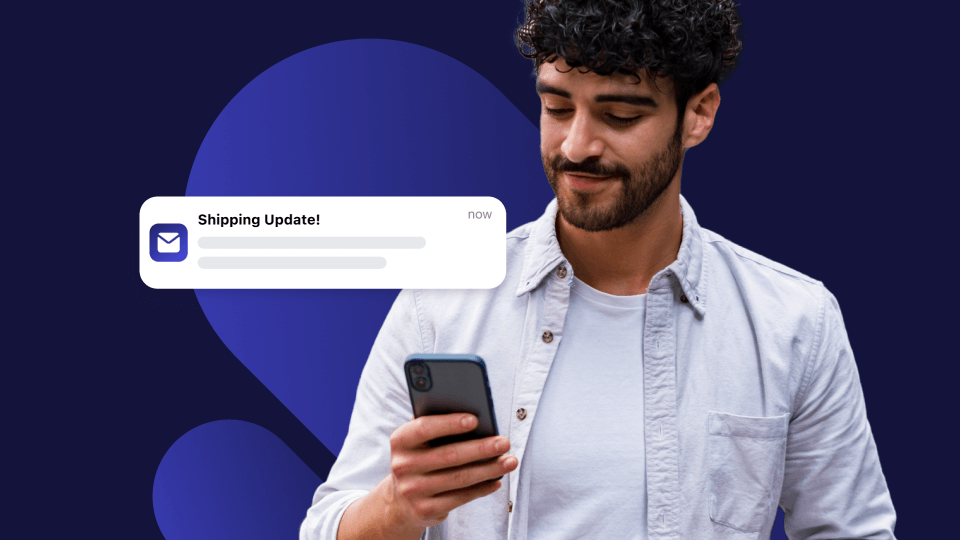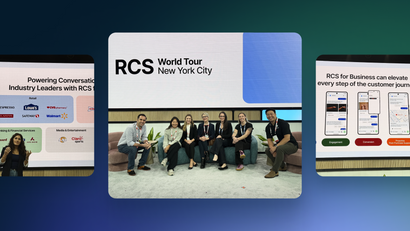Most of us remember the flurry of holiday shipping delays that have played a villainous part in the last few years’ holiday shopping seasons.
Even without shipping delays, many businesses struggle to execute the logistics of a holiday demand surge, which can strain cross-functional resources and require a level of adaptability and scalability in both your business and its communication strategy.
On top of the regular challenges companies face during the holiday season, evidence shows that shipping delays are highly anticipated this winter. Reminiscent of the issues we witnessed in 2020 due to Covid-related disruptions, this year’s delays are a clear downstream effect of the Ukraine-Russia conflict.
The following data indicate that companies must be ready for upcoming holiday supply-chain challenges…
- Data that tracks global supply chains shows that shipping delays from China to the US have increased fourfold since the end of March
- Freight costs are also increasing
- We’ve also seen Inflation in the cost of oceanic shipping
- Evidence shows that overall increases in shipping costs create persistent downstream delays that reach their height a year and a half after the costs themselves spike
Given this evidence, this year’s commerce and retail seasons may create hurdles for businesses of all sizes in satisfying and communicating with users through the end-to-end process of order placement, shipping, and delivery.
Adverse Effects of Shipping Delays on Small Businesses
On top of the data we’ve mentioned predicting the general delays consumers will experience in the 2022 shipping season, there is clear evidence that small businesses generally suffer disproportionately from these disruptions.
Its been seen that small businesses generally fair worse during supply chain issues, given their limited set of resources. If you’re a startup or run a smaller operation, this advice could be even more relevant for you in the coming year than it is for larger enterprises.
Best Practices for Communicating Shipping Delays and Updates
We know it’s daunting to manage the fear, frustration, and anxiety of holiday shoppers. Here, we've outlined what we recommend you do within your communication strategy to stay ahead of a complex supply-chain situation with many factors outside your control.
1. Anticipate Delays
Because supply chain issues are to be expected this holiday season, you’ll need a premeditated plan for how your company will troubleshoot these inconveniences in the first place.
By taking preventative steps such as placing orders with retailers on an earlier timeline, expanding your network of supply partners, and backfilling goods that you generally sell out of during the holiday season, you can help reduce the volume of customers affected by delays in the first place.
If you don’t already have a clear model detailing your company’s supply chain logistics, It could be useful to map out your goods’ precise path across all shipping touchpoints — from your key suppliers to your warehouse units and ultimately to a consumer’s doorstep. You can then identify points in the user journey where you expect orders could be stalled and work on prepping communications for these moments.
Knowing which products you expect to be delayed will also help you prepare your segmentation and targeting strategy for the upcoming months.
Let’s say for instance, you know that half your Santa sweater retailers are based in China. You can preemptively consult your team and set up a stockout alert campaign for these items.
2. Communicate Expectations Early
Once you’ve appraised which goods you expect to be delivered on a delayed timeline, you can be transparent with consumers about which product categories you expect issues with directly along the user journey.
For instance, you can trigger an in-app message or web popup to warn consumers that a certain class of goods, like your store’s designer purses, will likely experience delays this season. You can also add notices to product pages or trigger web notifications for goods you anticipate will be impacted by supply chain issues.
Communicate forecasted delays and their estimated lengths/durations in multiple places on your site, such as your site header, product detail pages, within your checkout flow, and via web push notifications.
Being transparent and specific with predictions around which items you expect to have issues with is a best practice because although you may be worried some consumers might choose a different company to buy from, at least you’re being honest and precise about the inconveniences your consumers will face, which ultimately adds to your brand credibility and instills trust.
For instance, if you calculate that your shoe inventory from a given supplier is 50% likely to be delayed, you can create a friendly popup on your website that communicates this information upfront that this particular supplier will be late on delivery.
3. Follow Up With Appropriate Cross-Sells
Just because a single good or service is out of stock doesn’t mean you have to give up on a potential purchase. If you have a user's opt-in for a channel such as email or push, you should take advantage of the data you have on their behavior with an out-of-stock item by retargeting them with a related item.
For instance, you can establish a follow-up email message sequence targeting users who failed to check out an out-of-stock product on your site. You could reengage this audience with an alternate product, for instance, by sending them a push notification cross-selling a complementary product in the same category or even offering them a substitute brand option from a supplier that you don’t expect to be impacted by the shortages.
4. Communicate in a Timely Way
You may be wondering when to communicate supply chain delays/backorders..
First, if you haven’t already, you’ll want to establish a rule of thumb for how you communicate the shipping process to users. Let’s say you usually send a shipping confirmation via email, provide a real-time tracking interface on your app, and send a reminder push when a user’s order arrives safely at its designated location.
In anticipating delays, modify your cross channel communication sequence ahead of time to maximize the visibility of your message when it’s down to the wire.
In this scenario, you can create an email formally expressing the delivery issue as soon as you know that a retailer is experiencing shipping delays. If a consumer doesn’t open the initial email, you can then send them users follow-up SMS hyperlinking them to check the status of their delayed item on your website.
5. Send a Follow-Up Survey
Customer surveys are an important source of constructive feedback. They not only show your customers that you care, but they also assure users that you’re refining your processes.
Consumers appreciate brands that care about their experiences and want to improve their delivery experience despite the challenge presented by outside forces like global supply chain issues. With short in-app surveys, for instance, you can gain direct input on what parts of your messaging strategy resonated with consumers throughout this process and what parts didn’t.
You can ask users questions such as “What channels did you receive our communications on? Which message reached you first? On a scale of 1-5, how informed did you feel throughout the shipment and delivery process?”
This way, you can better prepare for future supply chain issues and communicate with customers in the wake of these inconveniences.
6. Use a Variety of Channels To Update Consumers
Knowing Which Channels to Use and When
As we’ve seen in some of these tips, different messaging channels can serve unique functions in communicating timely shipping information and delays.
Email is an excellent medium for long-form and official messages, which makes it a prime choice to document a given shipping delay in the fullest detail you have. This can serve as both a record and apology for the inconvenience and even provide links to your written news or PR content. You may send an initial email before the shopping season starts explaining the full context and extent of supply chain issues and how they may affect your shoppers’ eCommerce experience.
Push
Arriving as a rapid and real-time ping to your user’s smartphone, push notifications are Ideal for instant reminders along the delivery journey. They can work to reinforce your initial formal messaging content. You can echo your earlier formalized email messages and apologies with additional push notification sequences to reach mobile users in a real-time way. Push notifications are an excellent messaging option for delivering real-time stockout alerts or warnings that a given item category is running low. Push also provides a great backup channel if for users who haven’t opened your initial email.
After a delay has been established, you can then subsequently send users timely updates on their order status via the push channel so that users feel as though they are directly in the loop throughout the entire process.
Some of your audience may also be less diligent about opening their emails, so using push to bring the message home can more quickly warn these users of the anticipated delays.
SMS
SMS is another widely used channel in shipping and delivery processes because it’s mobile-first and targets an actively opted-in and attentive audience. Because your text list consists only of users who’ve directly opted into receiving your communications in this intimate channel, you must use it to send critical transactional updates directly to their message inboxes.
With SMS, you can reach users who have push notifications for your app turned off, who don’t have your app installed, or who don’t have a smartphone in the first place. They are excellent for a global user base and for individuals with limited internet access. Similar to push notifications, SMS is short form-and real-time, making it an important medium to keep your message short, specific, and clear. You can always hyperlink back to a comprehensive email, webpage, or article on your site explaining the reasons behind the delays occurring with a consumer’s product.
Get Started with OneSignal
OneSignal is designed to help you send notifications and seamlessly manage your user communication across various channels, including mobile push notifications, web push notifications, bulk SMS, in-app messaging, and email. Our platform is quick to set up and makes it easy to send eye-catching messages without doing any development work. If you don't have a OneSignal account, you can create one for free and start sending push notifications to your users today. Don't take our word for it — simply sign up and see for yourself!
Get Started for Free




